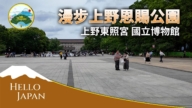【新唐人2011年4月21日訊】湄公河流域國家長期以來遭受旱、澇災之苦,據調查,這與中共在瀾滄江興建水壩有關,也影響了這些國家的生態和經濟。地質學者楊勇認為,這不只是一個有關環境和資源的問題,已經成了政治問題。他建議各國要將資訊透明化,並且要做好水文調查和資料共享的協調機制。
4月19號,湄公河四國委員會針對湄公河修建水壩一事,沒有達成共識。老撾原本計劃興建的沙耶武裏水壩和水電站,也因為會員國意見分歧而喊卡。
湄公河與亞馬遜河、剛果河並列世界自然資源最豐富的三條大河。湄公河上游在中國境內叫瀾滄江。「國際河流」組織(International Rivers)表示,中國在湄公河上游的大壩及航道的建設,威脅著這個複雜的生態系統。
連續幾年,湄公河下游國家遭受嚴重的旱、澇災害。《自由亞洲電臺》報導,環保組織在湄公河流域國家所作的調查顯示,目前湄公河幹流水位下降以及流域改道,所造成的水文災害,與中共在上游—瀾滄江修建的多座水利工程有關。
據了解,中國在瀾滄江建成運行的水壩有4~5座,在建的有3~4座,西藏境內規劃的情況不明,但少說也在15座左右。而水壩的截水能力對於環境的影響,一直受到沿江各國的關注。瀾滄江的這個問題至少存在有10年了。
湄公河流域的漁業資源,提供了數百萬人的生計。但湄公河流域國家在去年,遭受了50年以來最為嚴重的一次旱災。湄公河下游的農業、漁業和航運都受到嚴重影響。世界主要稻米生產國泰國和越南,水稻產量因為缺水而銳減,老撾和柬埔寨船只也都停航。
美國佛羅里達州環保專家林俊達教授說過,發展經濟與保護環境要並顧。
原美國環保署中國專案主任楊興泰向《自由亞洲電臺》表示,有關跨境河流的水利開發,中國在強調與周邊國家發展關係的同時,也必須考慮其他流域國家的利益。中國和周邊國家要維持良好的關係不能單一方面去開發,中國應該將國內開發資訊公開,讓這些國家了解和滿意。否則變成一個國際性的問題,對中國本身並不好。
國際自然保護聯盟水資源與自然保護協調員伯格卡普也指出,如果一方面拓寬河道改善了上游的航運,但另一方面影響到下游國家漁民的生活,使他們的收入大為減少。那麼就要對計劃作進一步的改進,既可以拓寬河道,又不影響到環境。
因此,楊勇認為,由流域各國參與的共同協調機制以及資訊的公開,才是保證湄公河流域合理開發的必要條件。
新唐人記者李庭、孫寧綜合報導。
Mekong’s Ecosystem Needs Protection
Nations on the Mekong River have long suffered
from drought and flood. It is related to the dams
built by the Chinese Communist Party (CCP)
on the Lancang River, which has also affected
the economy and ecosystems of these countries.
Geologist Yang Yong believes that this
has become a political issue. He suggested
to enhance the hydrographic survey
and information sharing mechanism
in these countries.
The 4-nation Mekong River Commission did not
reach dam construction agreement on April 19,
Laos’ originally planned dam
and hydropower station were withheld
due to constituent members’ objection.
Mekong, Amazon and Congo Rivers are three
major revers in the world of the most abundant
natural resources. The upstream Mekong River
is called the Lancang river. International Rivers
said, that China’s dam construction upstream
threatens the complex ecosystem.
In recent years, Mekong downstream nations
have suffered from severe drought and flood.
According to RFA, surveys suggested
that drop in water level and river path diversions
on Mekong have caused hydrological disasters,
related to the CCP’s dam constructions
on the Lancang river.
China has 4-5 dams already built and 3-4 dams
under construction on the Lancang River,
with at least another 15 dams in Tibet.
The effect of these dams on the environment
is a concern for all the downstream nations.
The problem with the Lancang River
is at least 10 years old.
Mekong River’s fish resources create jobs for
millions of people. Last year Mekong countries
suffered the most severe drought in 50 years,
which considerably affected their agriculture,
fisheries and water transportation.
Thailand and Vietnam incurred sharp reduction
in rice production due to water shortage.
Ships are suspended in Laos and Cambodia.
Prof. Lin Junda, Florida’s environmental expert,
said that economic development
and environmental protection should co-exist.
Yang Xingtai, former director of the EPA’s
China task force, said to RFA, that China
should maintain a good relationship
with its neighboring countries by considering
the interests of other countries on the river.
China should not unilaterally stress
on its development, but should open up
its development information to other countries
for their understanding. Otherwise, the issue
may become international,
which is detrimental to China.
The coordinator of IUCN on water resources
and natural protection said, that if the waterway
improvement enhances the water transportation
upstream, but impacts negatively the fishermen
downstream, causing their incomes to reduce,
then the upstream plan needs improving
so that the waterways can be widened
without deteriorating the environment.
Yang believes that a coordination mechanism
among all the nations and information disclosure
are necessary to guarantee
reasonable development of the Mekong River.
NTD reporters Li Ting and Sun Ning






























